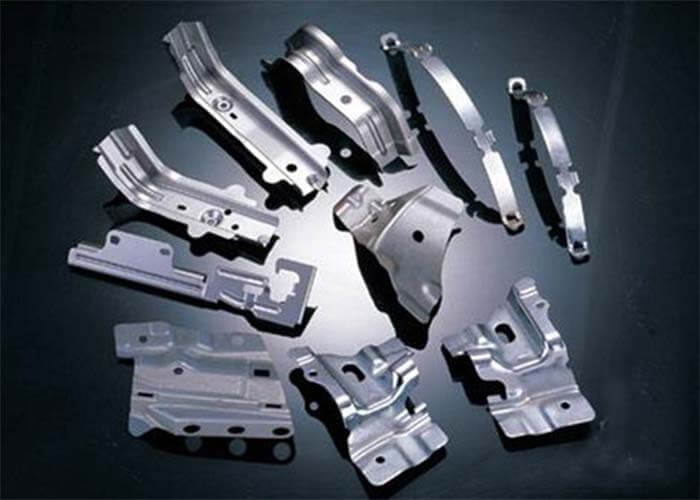Types of stamping die classifications
Types of stamping die classified by process attributes
Punching dies, bending dies, stretching dies, forming dies, and riveting dies are classified according to process performance.
- Blanking dies: A die that separates materials along a closed or open outline. Such as blanking dies, punching dies, cutting dies, slitting dies, trimming dies, cutting dies, etc.
- Bending dies: A mold that makes the sheet blank or other blanks bend along a straight line (bending line) to obtain a certain angle and shape of the workpiece.
- Stretching dies: The blank becomes an open hollow part, which further changes the shape and size of the stamping die.
- Forming dies: It is a mold that directly replicates the blank or semi-finished product according to the shape of the convex mold and the concave mold, and the material itself only produces local plastic deformation, such as bulging molds, shrinking molds, flaring molds, undulating molds, and flanging dies, forming dies, etc.
- Riveting and closing the mold: Use external force to connect or overlap the participating parts in a certain order and manner, and then form a whole.
Types of stamping die classified according to the degree of process combination
The four categories of single-process molds, composite molds, progressive molds, and transfer molds are classified according to the degree of process combination.
- Single process mold: In the stroke of the stamping part, the mold has only one stamping process.
- Compound mold: There is only one station, and two or more stamping processes can be completed at the same time on the same punching machine and the same station.
- Progressive die (also known as continuous die): In the feed direction of the blank, there are two or more stations. On a one-stroke press, two or more are gradually completed at different positions stamping process.
- Transfer mold: Combining the characteristics of single-process mold and progressive mold, it mainly adopts a manipulator transmission system to realize the rapid transfer in the product mold. The production efficiency of the product is greatly improved, the production cost of the product is reduced, and the material cost is saved, and the quality is stable.
Types of stamping die classified by-product processing method
According to different processing methods of products, molds can be divided into five categories: punching and shearing molds, bending molds, drawing molds, forming molds, and compression molds.
- Punching and shearing die: the work is done by shearing. Commonly used forms are shearing dies, blanking dies, punching dies, trimming dies, edge dies, punching dies, and punching dies.
- Bending die: The bending die is a shape that bends the flat blank into an angle. Depending on the shape, accuracy, and production volume of the part, there are many different forms of die, such as ordinary bending die, cam bending die, Crimping die, arc bending die, bending punching die twisting die, etc.
- Drawing the mold: the blank plane is made into a container with a bottom but no gaps.
- Forming die: refers to the method of local deformation to change the shape of the blank in the form of a convex forming die, a curling edge forming die, a necking forming die, a hole flange forming die, and around edge forming die.
- Compression dies: It uses strong pressure to make the metal blank flow and deform into the required shape. Its types include extrusion dies, embossing dies, embossing dies, and end pressure dies.
You may also be interested in the below articles.
Summary Of 50 Injection Mold Structure Operation Dynamic Diagrams
Auto Parts Stamping Die Design Concept




